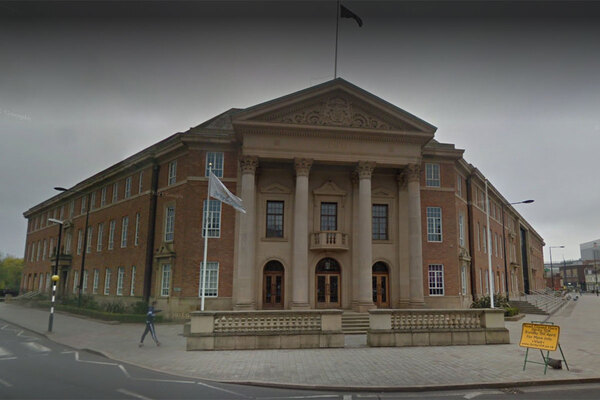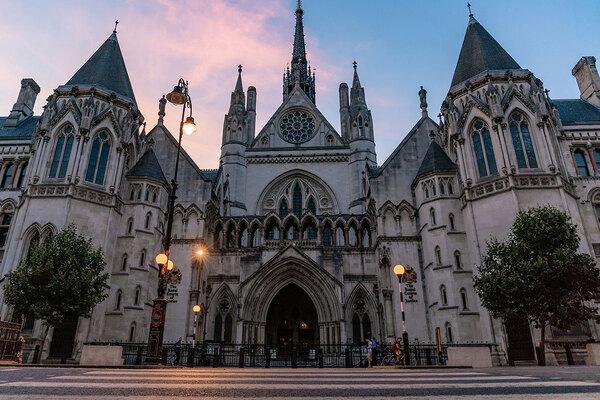You are viewing 1 of your 1 free articles
Fixing the broken replacements machine
Last month the government finally fell behind its pledge to replace additional Right to Buy homes sold on a ‘one-for-one’ basis. Pete Apps asks what is next for housing’s most debated policy
It was three days before Christmas 2011. The country was covered in snow and ice amid one of the coldest Decembers on record. The new coalition government was battling against gloomy economic forecasts and the eurozone was in the middle of a deepening financial crisis.
Somewhere within the bowels of Whitehall a civil servant pulled together a press release formally announcing the relaunch of Margaret Thatcher’s Right to Buy, with discounts boosted from around £16,000 to £50,000. This would eventually become £75,000, and then £100,000 in London. But this time the policy came with a new promise.
“We are also determined to maintain the number of affordable homes for rent,” said then housing minister Grant Shapps. “So for the first time, every additional home that is sold will be replaced by a new affordable home on a one-for-one basis.”
Six and a half years on, the government has finally, officially broken this promise.
A total of 63,518 homes have been sold by councils, and a further 19,765 by housing associations under the preserved Right to Buy. In total, 15,981 replacement homes have been started. It would look like the government is well behind the curve, but it has always had some substantial caveats.
First, it takes no responsibility for ensuring replacements are built for the housing association homes sold. And then it gave councils three years to hit the pledge, so it needs replacements to match the figure for the end of 2014/15 to meet the promise. This is 26,188.
But then, it was careful enough to draft the promise to only cover ‘additional’ homes. This is calculated using a formula for how many homes would be sold had discounts not increased. When applied to the 26,188 the target becomes 17,021.
In figures released at the end of March, it announced it had finally fallen behind this total, with a total of 15,981 council homes started or acquired as replacements. This may seem like a fairly irrelevant piece of statistical juggling – if the pledge was so caveated as to be almost meaningless, why should it matter that we’ve fallen behind?
But there is likely to be an impact. The government has lost the political cover regarding the policy. This time last year then housing minister Gavin Barwell said breaking the pledge would mean Right to Buy was “no longer politically justifiable”.
Indeed, after the statistics were released, Dominic Raab, the new housing minister, after putting a predictable dig at councils to blame them for missing the pledge, released a statement promising to provide some new flexibility.
The truth is this is overdue – councils have been calling for several relatively simple amendments since before the extension even took force. At least one or two of these now look likely to finally take effect. So what are they?
John Bibby, chief executive of the Association of Retained Council Housing (ARCH), says he is “heartened” by the minister’s commitment to more flexibility.
“ARCH has long campaigned for greater flexibilities in the use of Right to Buy receipts,” he adds. “Such flexibilities are essential if councils are to be freed up and enabled to deliver the government’s pledge of one-for-one replacements.
“We look forward to continued dialogue with [Ministry of Housing, Communities and Local Government (MHCLG)] officials and early consultation on this matter.”
It is understood MHCLG officials will meet with representatives of councils in early May to start figuring out a proposal. The consultation is then likely to be launched alongside the Social Housing green paper, which is increasingly imminent.
At these meetings, council figures will have a series of relatively simple demands. Firstly, they will request they are allowed to keep 100% of the receipts.
Currently, receipts are divided as follows. First, a calculation (using the same methodology as to set the ‘additional’ target) is applied to assess the sum of money which would have been received had the discounts never been received. This pile is deemed the ‘assumed share’ and is split between local authorities, debt repayment and the Treasury. Anything additional can be used by councils for replacement, once the administration of the scheme has been paid for.
It is this last chunk, which disappears off to the coffers of Westminster, which councils would like to see retained for new build. MHCLG holds figures on how the £4.8bn of receipts taken since 2012 is split, but does not release it publicly and refused to provide it for this article. This time last year, £800m of the £3.5bn then raised had gone to the Treasury.
This means of dividing up the receipts leaves councils short of cash. For example, the government’s formula may assume £500,000 of Right to Buy receipts a year. Before the discounts were raised this would have been raised from three sales. But with hugely increased discounts it may take eight sales.
This leaves councils with little cash to replace a lot of homes. Leicester Council, which has started 284 replacements despite selling 1,476 homes since 2012, says the formula leaves it with around £20,000 per home. Nottingham, which has started 184 builds to 1,453 sales says it keeps just £13,638 per sale – plainly a small amount of cash to fund a replacement.
This leads on to the second change councils will seek. A misconceived attempt to achieve value for money when the scheme was launched limited the amount that could be spent on replacements to 30% of the cost of the new home. But securing the additional 70% is a challenge, given that local authority borrowing capacity was capped by government in 2012. They are also banned from combining receipts with other forms of grant.
Councils are also given just three years to use the receipts after which they must be returned to the Treasury with interest. Lobbyists will seek an extension of this to five years, to give councils more time to plan and avoid the situation now where some simply hand them back early to avoid the interest knowing they will not be spent within the time limit.
They will also, perhaps ambitiously, ask for the power to reduce discounts locally if they cannot replace otherwise.
All of these seem reasonable asks to which the government would lose little by agreeing. But councils have been here before.
Lobbying groups have been fruitlessly and fairly desperately demanding these sort of changes for years – with the Local Government Association recently warning that the Right to Buy itself will grind to a halt if something is not done, as the country will run out of council houses.
But the government has been able to bat away these claims until now by hiding behind its promise to replace homes.
Discussions about flexible use of Right to Buy receipts formed part of high-level talks on bespoke deals, which councils were led to believe were the government’s next step for council housebuilding, only to be let down when the policy disappeared off the table following the Autumn Statement.
There are other reasons why replacements have been low. Within three years the new homes built will again be subject to the Right to Buy, and in many areas could end up being sold at a loss considering the discount.
As Jane Urquhart, portfolio holder for housing at Nottingham City Council, says: “New build homes are also eligible for [the Right to Buy] under the government’s policies, leading to a situation where new homes are vulnerable to being purchased as soon as they are built.
“Where houses prices are low and build costs are high, this could create a loss for the council, further limiting areas where we can viably develop.”
Replacements were also slowly ticking upwards ahead of the surprise rent cut in 2015. This policy – the reduction of council rents by 1% for four years from 2016 – ripped a hole in councils’ 30-year business plans, forcing many to scrap or re-appraise development plans. Following steady growth through to April 2015, the number of replacements started plummeted and took a year to recover.
With a new rent settlement in place, £1bn of additional borrowing power on the horizon and the government finally at the table to talk about flexibilities, it is possible the replacements machine could get whirring and at least start churning out enough to meet the caveated pledge on replacements.
But that it has taken so long to receive only these flexibilities will remain a source of frustration.







